If your daily energy feels like a phone stuck at 10%, the problem might not be just your lifestyle choices — it could be your cells. Deep inside your body, every cell depends on small energy-producing engines called mitochondria. When these engines run slow, so do you. That’s where red light therapy comes in — a non-invasive, evidence-based solution designed to “recharge” your body at the cellular level.
So, let’s break down how this therapy actually works, and why some people describe it as plugging themselves into a power source.

What Are Your Body's Cellular Batteries?
Inside almost every cell in your body are small structures called mitochondria — commonly known as the “powerhouses of the cell.” Consider them as the rechargeable batteries that keep you going. Their job is to take the food you eat and the oxygen you breathe and convert them into a molecule called ATP (adenosine triphosphate).
ATP is the energy currency of life. It powers everything from contracting your muscles and repairing tissues to fueling your heartbeat and allowing the cells in your brain to communicate. Without a rapid supply of ATP, even performing basic activity feels exhausting.[1]
What makes mitochondria so fascinating is that you don’t just have a few — you have hundreds to thousands per cell, depending on how much energy that cell requires. High-energy muscles and brain cells are packed with mitochondria that need lots of fuel. The better these microscopic batteries work, the more energized and robust you feel.
The Real Impact of Low Cellular Energy
Many of us never realize that our constant fatigue, low motivation, or failure to bounce back from tough workouts could be linked to sluggish mitochondria. The signs of a mitochondrial dysfunction are surprisingly common:
- Chronic tiredness
- Brain fog
- Weakened immunity
- Slow muscle recovery
- Increased inflammation
- Mood swings
Joe Rogan, the influential podcast host and fitness enthusiast, has openly discussed incorporating red light therapy into his recovery and wellness regimen. On The Joe Rogan Experience, he shared how adding red light sessions dramatically boosted his energy levels, recovery, and overall mental clarity. “It’s like I’m charging my body,” he said. “After a session, I feel sharper, more focused, and physically rejuvenated”.
There’s actual science behind these experiences. The effects of mitochondrial dysfunction are being studied not only in chronic fatigue syndrome and aging — it’s also a cause of diseases such as fibromyalgia and even neurodegenerative diseases.
How Does Red Light Therapy Increase Energy?
So how can shining light on your skin boost something deep inside your cells?
Red light therapy uses wavelengths of red and near-infrared (NIR) light, typically in the range from 600 to 1000 nm. These wavelengths can penetrate deeply into the skin and directly reach the mitochondria within cells, particularly in muscles and surrounding tissues. [2]
Once there, this light doesn’t simply heat the body — it interacts with specific parts of the mitochondria that absorb light energy and stimulates a series of beneficial biological reactions.
Think of it like solar panels on a roof. When light strikes the right spot, it generates energy.
The Link Between Red Light and Mitochondria
What does red light do to your body’s “power plants”? The secret lies in an enzyme inside our cells called cytochrome c oxidase that produces energy in our mitochondria, and it happens to be photosensitive.
When red and near-infrared light gets to your tissues, photons are absorbed by this enzyme, which activates a series of positive changes:
Opening blockades: These enzymes release excessive amounts of nitric oxide, which blocks energy production.
Boosts Oxygen Supply: Oxygen consumption by the cells improves.
Electron flow accelerates: The enzyme gets better at transferring electrons along the transport chain, the final stage of generating ATP.
The outcome? Your mitochondria will produce more ATP — more efficiently and without using stimulants or unnatural sources of energy.

A Natural Way to Boost ATP Production
This is one of the reasons red light therapy feels different from fast, quick fixes like caffeine. You aren’t only churning up your nervous system — you’re actually expanding the energy-making capacity of your own body.
This lift in internal energy shows up in measurable ways. Clinical trials and research studies have found that red light therapy may: [3]
- Boosts ATP production by 30-200% in a few cells
- Improve muscle performance and endurance
- Assist in relieving fatigue during chronic illness
- Speed up recovery post-exercise
Here’s a simplified comparison to show the difference between a superficial energy enhancer and long-term mitochondrial support:
| Energy Boost Method | Source | Duration of Effect | Targets |
| Caffeine | External stimulant | Short | Nervous system |
| Sugar | Glucose (rapid energy) | Short | Blood sugar/metabolism |
| Red Light Therapy | Light-activated ATP boost | Long-term (with consistent use) | Cellular Mitochondria |
How to Improve Mitochondrial Function for Better Health
Your mitochondria are your body’s real batteries. Take care of them and they’ll take care of you.
The good news is that mitochondrial health isn’t inevitable — you can adopt active steps to improve it. Red light therapy is one such method, but it’s most effective when combined with other habits that promote the optimal environment for your “cellular batteries” to flourish. [4]
- Consistent Use of Red Light Therapy: Regular exposure to red light or near-infrared light accelerates the mitochondria's ability to produce ATP, our body’s most sustainable form of energy.
- Movement and Exercise: When you move, even moderately, your body triggers mitochondrial growth (known as mitochondrial biogenesis) to process energy more efficiently.
- Balanced nutrition: Nutrients such as CoQ10, magnesium, B vitamins, and antioxidants (found in colorful fruits and vegetables) are the raw materials mitochondria need to function and repair.
- Quality Sleep: When you’re in deep sleep, your body clears damaged mitochondria and creates room for the healthy ones.
- Stress Management: High levels of chronic stress can harm mitochondria, so practices such as breathing exercises or meditation, and short walks each day can protect them.
Optimizing Your Cellular Energy for Better Health
The root causes of fatigue can often be overlooked. We tend to blame stress, aging, or lack of willpower. But your body’s energy relies on a deep cellular process — and when the system is sluggish, no amount of motivation can overcome it.
Red Light Therapy provides a safe, non-invasive, and remarkably effective way to boost your energy, potentially from bottom to top. It doesn’t force your body to do extra work; it helps your cells work smarter.
If you're curious about supporting your energy levels on a deeper, sustainable level, RLT is definitely worth exploring. It isn’t a substitute for healthy living, but it can enhance the results of other good lifestyle habits.
References
- Cleveland Clinic. “Red Light Therapy: Benefits, Side Effects & Uses.” Cleveland Clinic, 1 Dec. 2021.
- Pagán, C. N. (2024, May 14). Red Light therapy: What is it? WebMD.
- Hamblin, Michael R. “Mechanisms and Mitochondrial Redox Signaling in Photobiomodulation.” Photochemistry and photobiology vol. 94,2 (2018): 199-212.
- Mitochondrial diseases. (2025, August 26). Cleveland Clinic.



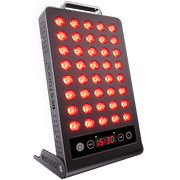









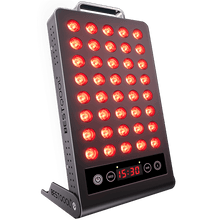
 Small
Small
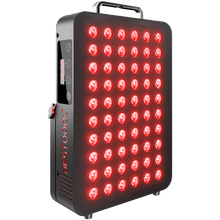
 Moderate
Moderate
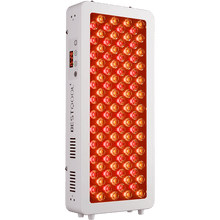
 Moderate
Moderate
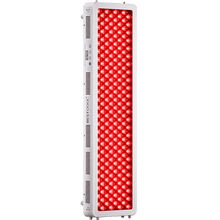
 Moderate
Moderate
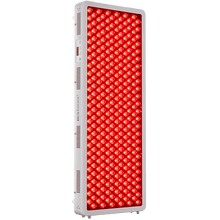
 Full
Full



